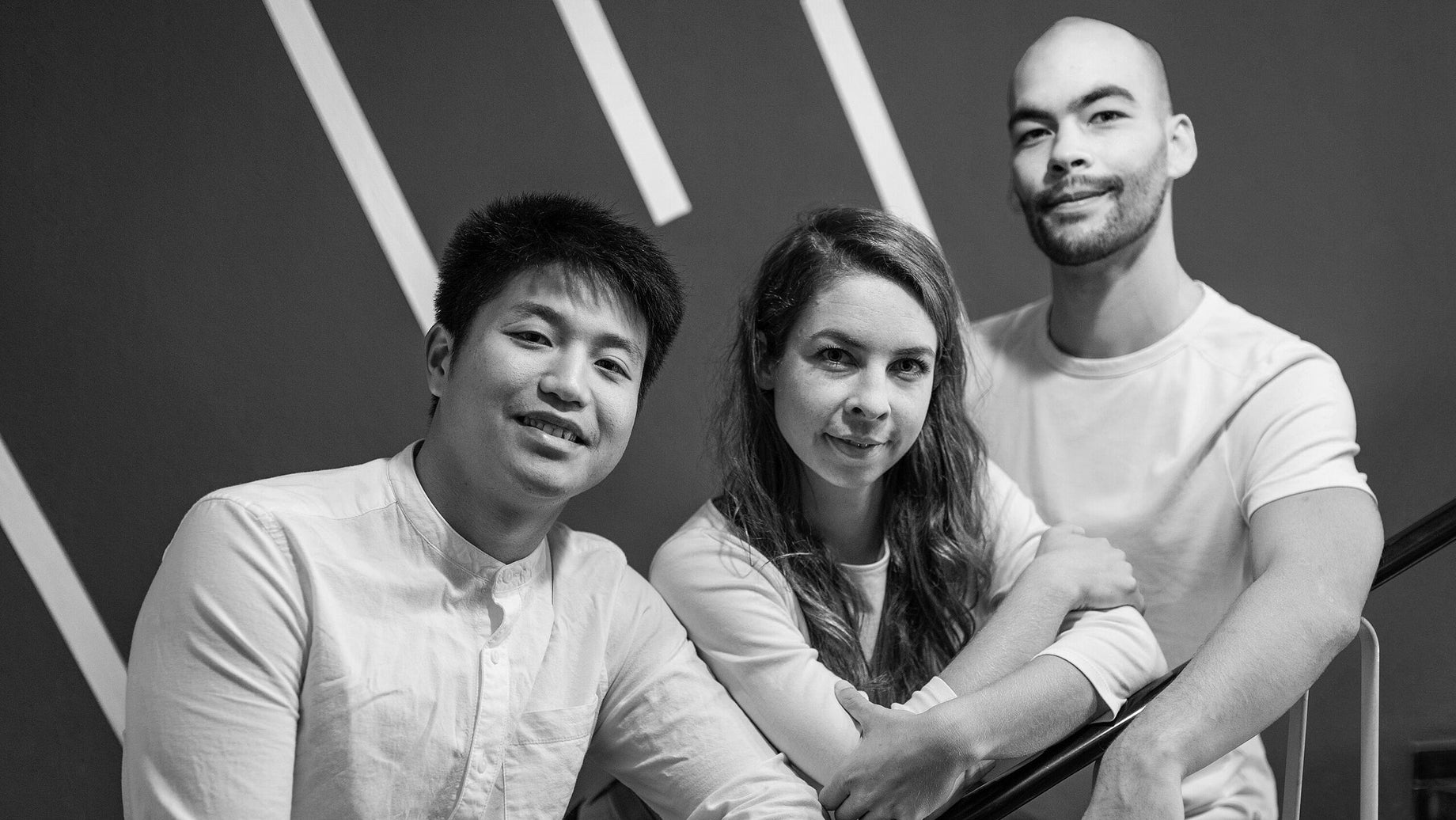Our founder and designer, Sophia Lindner, recently sat down with Pivot Pointe to talk about the act'pointe and the story behind act'ble's journey to revolutionize the dance industry.
"We strive to create better solutions; solutions that grow and enhance a dancer’s ability to perform." - Sophia Lindner, Founder & Designer of act’ble
A former ballet dancer turned designer and act'ble founder, Sophia Lindner has her sights on a pointe shoe revolution. With expertise in industrial design and product design, Sophia has applied her extensive knowledge into revolutionizing the new act’pointe, which enhances performance, backed by science, sports research, and the best-in-class design. With a mission to enable dancers to make a difference in their performance and life, under Sophia’s direction, we, act'ble are reshaping the future of dance.
Here is Sophia Lindner’s conversation with Pivot Pointe about the upcoming launch of act’ble’s act’pointe.
Pivot Pointe: Do you recall your first pointe shoe experience?
Sophia Lindner: First of all, it was very exciting! I think the first pointe shoe experience is one of the highlight events you aim for when you dance ballet. I remember that magical moment of trying my first pair; the incredible ability to extend my range of movement en pointe. However, at the same time, it was also the complete opposite: it hurt and felt super unnatural. But as a dancer, you don't question this. You think: It has to be like this.
Pivot Pointe: Having danced 14 years of ballet yourself, when did the inspiration come to redesign and reinvent the centuries-old pointe shoe?
Sophia: As a designer, your eyes are taught to identify problems and create solutions for them, which was what happened during my design studies. It became clear that there is a REAL problem with pointe shoes. When you spend all your time looking at new developments and technologies, it's astounding that the pointe shoe is still so limited in terms of health and performance. There is a beautiful reason why dancers accept all the pain and the health risks they are going through: their absolute passion. But it shouldn’t end up destroying their bodies and feet. I thought it was time to reinvent the pointe shoe and move it in a sustainable direction.
Pivot Pointe: Did you have a negative pointe shoe experience or injury that inspired you to create a different functioning shoe?
Sophia: Yes, of course. If you observe the pointe shoe anatomy, it's evident that the existing shoe can not work in synergy with the foot. Every problem has a reason, which is why we have completely rethought the shoe and its anatomy to create a shoe that adapts to the foot and not the other way around.
Pivot Pointe: Ballet prides itself on conservatism and tradition. In what ways do you think it holds the industry back from new innovations?
Sophia: I understand the value of tradition; how it should be rooted in the dance form itself, not necessarily anchored in a shoe, developed and using the capabilities and technologies of many centuries ago. To gain respect and inspire the next generations, you have to be open to new things, such as always finding the best possible treatment to expand performance and movement possibilities. To me, that doesn't mean destroying traditions. It means taking ballet to the next level to gain credit and respect from other industries; that is what we at act'ble are currently experiencing. We have to build a bridge between the dance world and the world outside of dance. During these last years, we have won numerous awards and got in touch with scientists and experts in medical and manufacturing high-level performance shoes and so on. It happened very often that these experts did not know much about ballet; however, as soon as we told them about the iconic aesthetic and the athleticism of dance, they were more than impressed, developed respect, and wanted to be a part of our journey.
Pivot Pointe: Why do you think there is so much reluctance to challenge the status quo in ballet?
Sophia: It's a good question because it has always been done this way for such a long time. The more time goes by, the more the mindset normalizes itself and the more difficult it becomes to question the status quo.
Pivot Pointe: It’s quite a drastic switch from ballet to industrial design. What is it about design that draws your appeal?
Sophia: Doing what I do now melts two of my biggest passions together: ballet and design. The human body and the movements that it can express have always been an enormous inspiration to me. This topic has always been the basis for my design projects. And I think the human body represents an understanding of proportions and ratios that shapes our aesthetic perception. So having danced ballet for 14 years educated me in that. Movement generates emotions, and great design should achieve the same. Good design can enable quality of life, such as moving things in a more sustainable direction while creating value is a great motivation to me.
Pivot Pointe: In your bachelor thesis, you created the act’pointe prototype (then called React), planting the seed for a revolutionary product and company. Was developing a new pointe shoe the end-plan?
Sophia: At the time, it was a project of the heart; I didn't aim to put it on the market. However, due to the number of positive feedback and motivational messages from dancers, dance medicine experts, and choreographers, it was clear that it had potential. I had to pursue it and develop the project into a viable product for a dancer.
Pivot Pointe: You have an impressive resume. You have maneuvered from product design, architecture, 3D, and prototyping to Audi as an industrial designer intern. It seems like you were carefully selecting and refining the skills you needed to create act’ble. Why was gaining insight and expertise into these specific areas important to the development of the shoe?
Sophia: Energy is created when friction occurs; different topics and abilities meet, which may not have been done before. And this energy is necessary to initiate a revolution. The different stages I was able to go through gave me a good overview and a basic understanding of product development and how a diversity of skills complement each other in the best possible way to create something new.
Pivot Pointe: With many international design accolades under your belt, was it after gaining recognition that you saw a need in the market for a new pointe shoe?
Sophia: Like in any case! That was the signal to implement this project professionally. I was surprised that there was such high demand despite centuries of no change.
Pivot Pointe: Does it astound you how far behind the ballet world is in innovation and sports medicine? Compared to its athletic counterparts in the sports world?
Sophia: Yes, it does. There is a study by Dr. James A. Nicholas, who examined 61 different activities. The study ranked ballet as the most physically and mentally demanding, followed by bullfighting, then football. No more words are needed. But still, other sports are better supported in innovation than ballet.
Pivot Pointe: You collaborated with John Cranko School’s lecturer of Dance Medicine to develop the very first act'pointe prototype. Why was being a former ballet dancer not enough? Why was it necessary to partner up during the research and development phase?
Sophia: I wanted to get professional feedback from the beginning. After all, it shouldn't be an experiment since we are talking about health! And who knows that better than the lecturer of Dance Medicine at the John Cranko School? Working with him was incredibly inspiring and an honor.
Pivot Pointe: Right now, you have several patents pending, but can you dive into some details of the shoe and what makes it revolutionary?
Sophia: We generated a new type of pointe shoe that dramatically reduced physical pain through our patented concept of a unique 3D printed sole combined with an upper. In over a hundred iterations, we 3D printed an individually generated prototype every 1 to 2 days, further optimized it, and tested it with high-level athletes from nearby state theatres, opera houses, and dance companies with extremely positive feedback. Due to the high precision of the 3D printing process, we developed a performance sole via rapid prototyping that had never existed before. We completely rethought and reinvented the 200-year-old traditional pointe shoe.
Pivot Pointe: In terms of materials, how do they contrast to existing models?
Sophia: Thanks to the technological advancements of 3D scans, 3D printing, and functional knitting, we developed a performance shoe that fits perfectly. In 3D printing, we have found a tool that offers the same precision and individuality as the athletes themselves. Mass customization opens up possibilities that were previously unheard of in this industry.
Pivot Pointe: Speaking of sustainability, how will the act’pointe be a sustainable product?
Sophia: Since the act'pointe lasts 5 times longer, we reduce waste dramatically. 3D printing plus form-knitting offer the basis to produce without waste. Above all, however, sustainability also applies to the topic of health. We want to enable athletes. Dancers should be treated and respected like the real athletes they are. That also means being educated in what is healthy and getting premium tools for high-performance athletes to perform what they love in the highest quality, thereby extending their careers in doing so. Dancers should set their standards high. They deserve it.
Pivot Pointe: That is very impressive. So how does the act'pointe last 5x longer than the standard paper mache pointe shoe?
Sophia: We have worked together with professional athletes from nearby companies in Germany, dance therapists, 3D scans and motion capture, the Fraunhofer Institute, and many test sessions where we worked on a high-level shoe that equals the performance of high-level athletes. The shoe eliminates the conflict between flexibility and stability. Our sole, which is new for the area, is constructed with incisions. This geometry allows free movement for the foot, whereas a physiological walking pattern is not possible with conventional shoes. On the other hand, the support function is ensured by the closing and blocking of the segments. That also means that the sole doesn't get destroyed easily or quickly. In combination with a knitted custom-fit “ShoeUpper”, the pressure is canalized through compression zones, and the musculature is relieved. According to a modular system, the sole and the knitted upper shoe-skin can be interchanged later once worn out. So dancers don't have to buy a completely new shoe.
Pivot Pointe: What are the values you’ve instilled into act’ble that sets you apart from other pre-existing pointe shoe brands?
Sophia: It is obsolete to think you have to destroy your body to make it work--an outdated mindset. A body that is injured, exhausted, distended, wounded, and overstretched is unable to perform on such a high level as dancing athletes do.
Thus, still, the world thinks this is how it works. But we want to cherish ballet and its dancers, value their art form, and appreciate their passion. We want to prevent injuries and save the athletes‘ health; we want to move away from that expired mindset.
We have opted for more natural skin tones instead of pink, as it represents the sport and is appropriate to the enormous performance of dancing athletes. We want to cherish beauty, perfection, power, and passion. For high-level athletes, there will be the possibility to make adjustments to individual needs in terms of performance and health. Thanks to mass-scale customization, dancers will be able to find a tailor-made answer to their requirements.
Pivot Pointe: The company is moving into its beta-phase and official launch. act'ble has partnered with the very best: knitwear lab and framas to reinvent the technology of pointe shoes, prioritizing function and aesthetics. How do you think the company's vision will be received by the ballet industry?
Sophia: You are right: the first 3D printed act’ble shoes will be available for purchase in early 2022 as part of a beta study; we are super excited about that!
It has been a design challenge. As designers, we are fascinated from an aesthetic point of view and how a pointe shoe can be further elongated and lengthened. It is a beautiful concept that we want to continue to push to the maximum.
We hope our mission and the act'pointe will continue to resonate with more dancers, directors, teachers, dance experts, etc., in the industry, where they recognize the unlimited potential of the shoe. We are in a day and age where performance and health are no longer either-or choices.
About Us:
We are a new innovative company creating the future of dance and movement. Together with design, research, and high-level athletes, we have reinvented the centuries-old pointe shoe for dancers into the act’pointe. A sustainable, functional, and fully customizable pointe shoe that molds to the dancer’s feet to enhance performance. Our mission is to enable dancers to make a difference, elevating their performance, life, and world.
see article on pivot pointe: https://www.pivot-pointe.com/stories/categories/in-conversation-with






